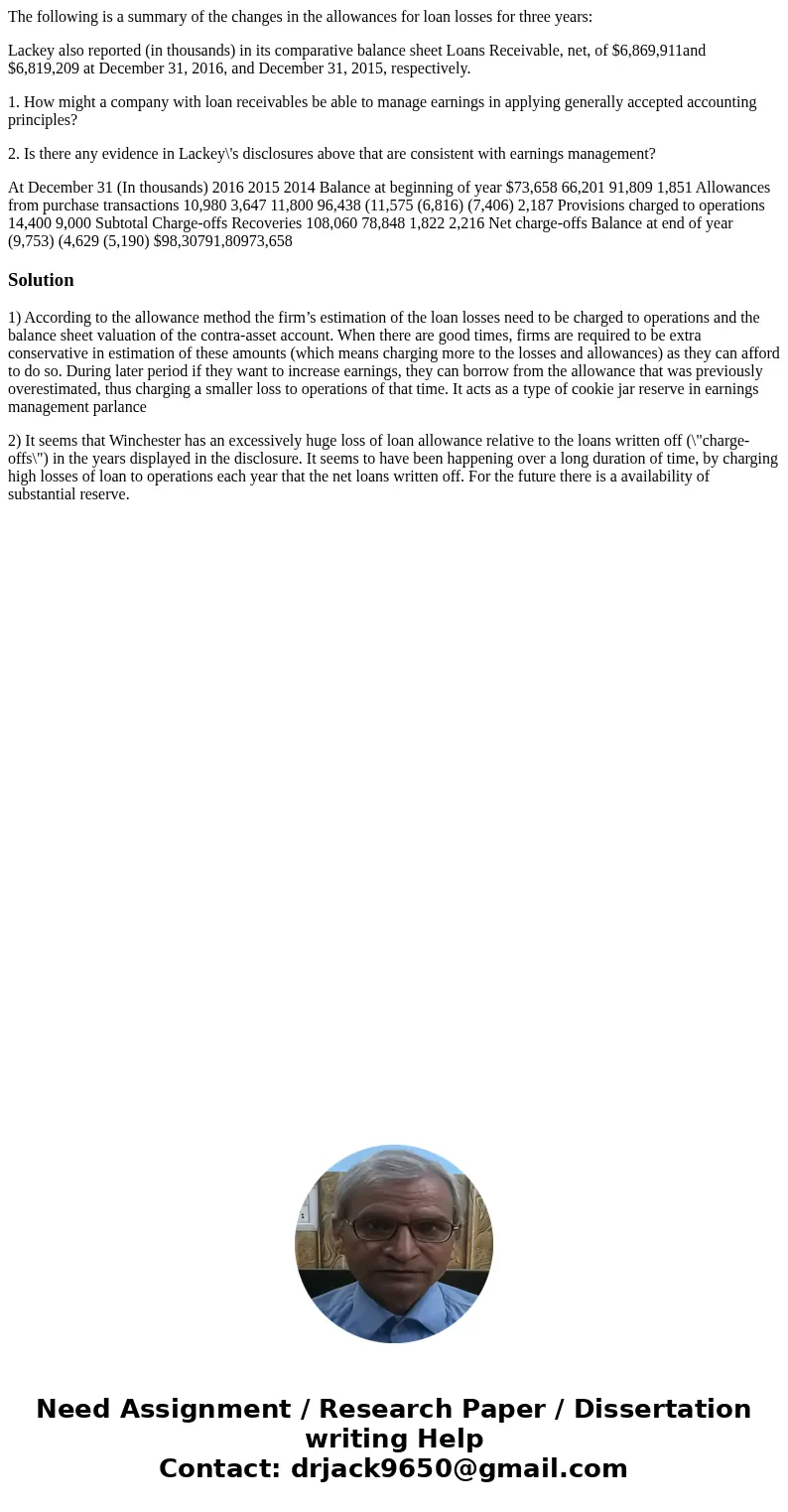The following is a summary of the changes in the allowances
The following is a summary of the changes in the allowances for loan losses for three years:
Lackey also reported (in thousands) in its comparative balance sheet Loans Receivable, net, of $6,869,911and $6,819,209 at December 31, 2016, and December 31, 2015, respectively.
1. How might a company with loan receivables be able to manage earnings in applying generally accepted accounting principles?
2. Is there any evidence in Lackey\'s disclosures above that are consistent with earnings management?
At December 31 (In thousands) 2016 2015 2014 Balance at beginning of year $73,658 66,201 91,809 1,851 Allowances from purchase transactions 10,980 3,647 11,800 96,438 (11,575 (6,816) (7,406) 2,187 Provisions charged to operations 14,400 9,000 Subtotal Charge-offs Recoveries 108,060 78,848 1,822 2,216 Net charge-offs Balance at end of year (9,753) (4,629 (5,190) $98,30791,80973,658Solution
1) According to the allowance method the firm’s estimation of the loan losses need to be charged to operations and the balance sheet valuation of the contra-asset account. When there are good times, firms are required to be extra conservative in estimation of these amounts (which means charging more to the losses and allowances) as they can afford to do so. During later period if they want to increase earnings, they can borrow from the allowance that was previously overestimated, thus charging a smaller loss to operations of that time. It acts as a type of cookie jar reserve in earnings management parlance
2) It seems that Winchester has an excessively huge loss of loan allowance relative to the loans written off (\"charge-offs\") in the years displayed in the disclosure. It seems to have been happening over a long duration of time, by charging high losses of loan to operations each year that the net loans written off. For the future there is a availability of substantial reserve.

 Homework Sourse
Homework Sourse